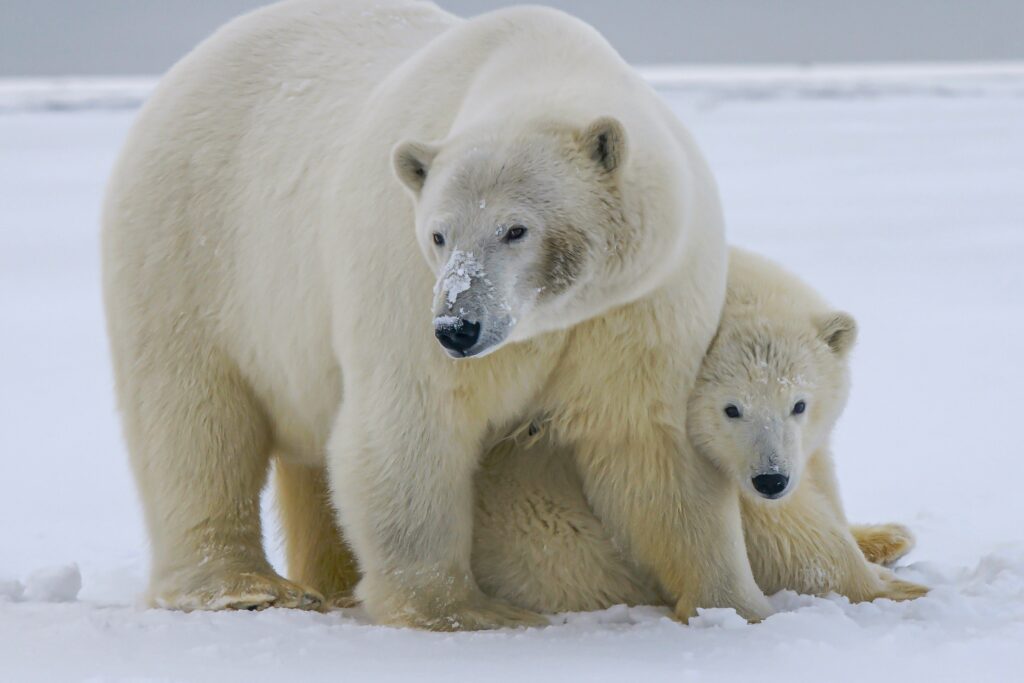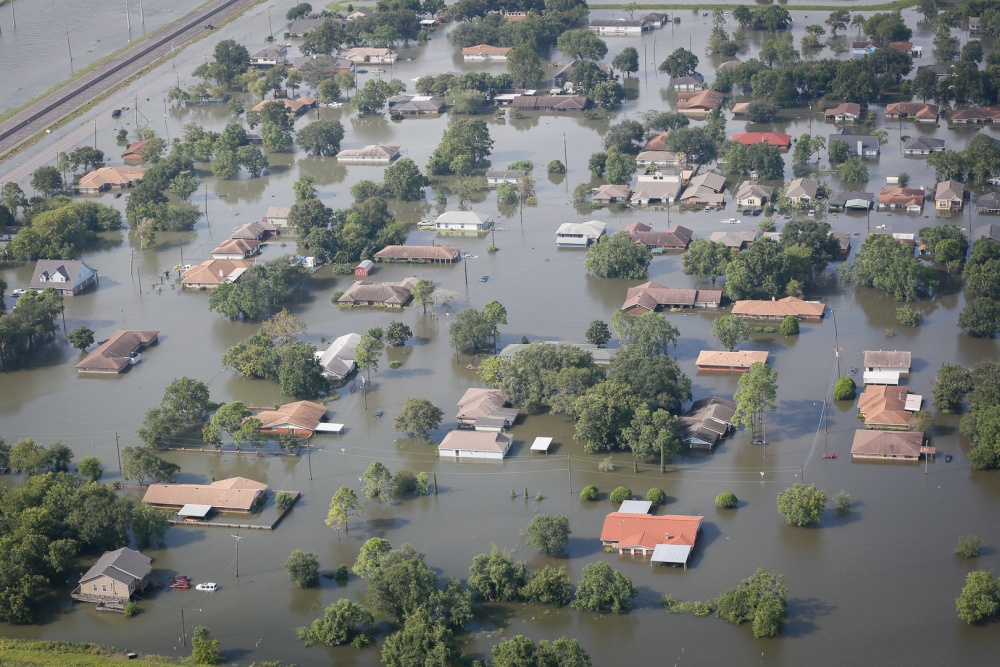
Earlier this year, the Bureau of Land Management (BLM) was sued for its approval of a major oil drilling operation known as the “Willow project”. The project is controversial due to its contribution to greenhouse gas (GHG) emissions and its location on the North Slope of Alaska, which happens to be the largest undisturbed track of public land in the U.S. and an area that is highly sensitive to climate change. BLM estimates that the project will produce up to 576 million barrels of oil over its 30-year lifetime, resulting in indirect emissions totaling 239 million metric tons of carbon dioxide (CO2) equivalent. The project will also contribute to “carbon lock-in” – the process by which expanding oil and gas infrastructure causes continued dependence on fossil fuels.
Environmental organizations and an indigenous group filed two lawsuits challenging BLM’s decision to move forward with the Willow project. One of the allegations raised in both complaints is that BLM violated the Endangered Species Act (ESA) because it did not evaluate whether the GHG emissions attributable to the project could affect the survival and recovery of ESA-listed species, specifically polar bears, Arctic ringed seals, and bearded seals all of which care “ice dependent” species that are uniquely affected by increasing temperatures and sea ice loss in the Arctic. BLM’s decision to exclude GHG emissions from its ESA jeopardy analysis can be traced back to a 2008 legal opinion for the Department of Interior (DOI) which declared that it is impossible to establish a causal connection between project-level emissions and harm to specific species and their habitats. The legality of this position has also been challenged in another active lawsuit involving DOI’s approval of over 3,500 drilling permits in New Mexico and Wyoming.
Scientists, conservation groups, and legal experts have argued that the 2008 policy was and continues to be “both scientifically and legally incorrect” because there are scientific techniques and data that can be used to evaluate the effect of project-level emissions on threatened and endangered species. Most notably, climate change detection and attribution researchers have developed methods for quantifying the relationship between a specific quantity of GHG emissions and specific impacts of climate change. As detailed below, this type of research could be used by decision-makers to evaluate the extent to which a project like Willow will exacerbate climate change-related threats to ice-dependent species.
The Legal Context: ESA Consultations and Jeopardy Determinations
Section 7 of the ESA requires federal agencies to ensure that the projects they implement, fund, or authorize will not jeopardize the continued existence of any species that is listed as endangered or threatened. This is accomplished through scientific consultation with the Fish and Wildlife Service (FWS) and/or National Marine Fisheries Service (NMFS), depending on which service has jurisdiction over the relevant species. An agency must initiate a Section 7 consultation for any federal action that “may affect” a listed species or its critical habitat.
This language sets a relatively low bar for consultations. According to the Ninth Circuit, “[a]ny possible effect, whether beneficial, benign, adverse, or of an undetermined character” triggers the requirement. See Karuk Tribe of California v. USFS (9th Cir. 2012); Cal. ex rel. Lockyer v. USDA, (9th Cir. 2009). Once consultation is initiated, the responsible agency must work with FWS or NMFS to evaluate whether the action may cause jeopardy to a species, i.e., whether the action “reasonably would be expected, directly or indirectly, to reduce appreciably the likelihood of both the survival and recovery of a listed species… by reducing the reproduction, numbers, or distribution of that species.” 50 C.F.R. § 402.02. The jeopardy analysis must be based on the best available scientific data. ESA § 7(a)(2). A federal agency cannot proceed with an action that would cause jeopardy unless the project receives an exemption from a special committee of cabinet officials known as the “God Squad”.
As discussed in previous work, federal agencies must consider climate science and climate change-related threats when implementing their duties under the ESA. Courts have held that agencies must consider how climate change is affecting environmental baselines during Section 7 consultations. However, there has not yet been any decision specifically vacating an agency action for failing to assess whether GHG emissions may cause jeopardy.
The federal government’s justification for ignoring GHG emissions in Section 7 consultations is outlined in a 2008 legal opinion from then-DOI solicitor David Bernhardt (who later served as DOI Secretary under President Trump). The opinion, known as the Bernhardt Memorandum, states that project-specific GHG emissions could not pass the “may affect” test and thus GHG emissions were “not subject to consultation under the ESA and its implementing regulations.” Bernhardt’s reasoning was that it would be impossible to establish the requisite causal link between GHG emissions, global climate change, and specific localized effects on species and their habitat due to the “complex and independent processes active in the atmosphere and the ocean acting on GHGs.” The memo also questions whether the magnitude of the impact from project-level GHG emissions could be large enough to trigger a Section 7 consultation – even going so far as to assume that any effects attributable to a particular project “would be too small to physically measure or detect.”
These views also appear to have influenced some of the regulatory amendments promulgated by the Trump administration when Bernhardt was acting as DOI Secretary. The amendments included a new provision specifying that agencies should not view an effect as being “caused” by an action unless there is “clear and substantial information” showing that the effect is “reasonably certain to occur,” and that agencies should consider whether the effect is “so remote in time from the action”, “so geographically remote from the immediate area involved in the action”, or “only reached through a lengthy causal chain that involves so many steps” such that the effect is not reasonably certain to occur. 50 C.F.R. § 402.17. The Biden administration is reviewing the Trump-era amendments but has not yet issued a concrete proposal to revise or rescind the provisions on federal consultations and jeopardy determinations.
The Scientific Context: Climate Change Attribution and Species Impacts
Climate change detection and attribution is a two-step process that involves: (i) detecting changes in the climate system and other interconnected systems, and (ii) determining whether and to what extent those changes were caused by human influence on the climate system. Detection and attribution studies often deal with the aggregate effects of human influence on the climate system – for example, examining the link between anthropogenic GHG emissions and extreme events. However, detection and attribution methods can also be used to quantify the relationship between a specific GHG contribution and specific consequences of climate change, such as temperature and sea level rise. This approach has been used to assess the responsibility of specific entities, such as national governments and carbon emitting companies, to climate change-related harms.
Climate scientists have also compiled a substantial body of research on the relationship between anthropogenic climate change and ecological impacts. As detailed in the latest IPCC assessment, climate change has already caused “substantial damages” and “increasingly irreversible losses” in terrestrial, freshwater, and marine ecosystems across the entire planet. There is very high confidence that “[b]iodiversity loss and degradation, damages to and transformation of ecosystems are already key risks for every region due to past global warming and will continue to escalate with every increment of global warming.” Climate change also poses an existential threat to some species, like the polar bear, and the federal government has recognized this when issuing ESA protections for these species.
There are some contexts in which detection and attribution research could be used to isolate the effects of a particular policy or project on climate change-related risks to species and habitats. For example, there is research on the relationship between GHG emissions and sea ice loss that is directly relevant to the claims raised by the Willow plaintiffs regarding consultation requirements for ice-dependent species like polar bears:
- The latest IPCC Assessment (AR6) found, with very high confidence, that sea ice extent has declined since 1979 in each month of the year, with the largest declines occurring in the summer, and that summer sea ice is declining most rapidly in the East Siberian, Beaufort, Chukchi, Laptev, and Kara seas. These regions overlap with the designated critical habitat for polar bears, ringed seals, and bearded seals. IPCC AR6 also found that reductions in Arctic sea ice extent scale linearly with both global temperatures and cumulative CO2
- Notz & Stroeve (2016) estimated the incremental contribution of CO2 to Arctic sea ice loss based on the robust linear relationship between monthly-mean September sea ice extent and anthropogenic CO2 They found that each metric ton of CO2 results in a sustained loss of 3 ± 0.3 square meters of September sea-ice. This study was submitted to BLM during the public consultation for Willow and the study findings are cited in both complaints. Based on this research, one could estimate that the emissions attributable to Willow (239 million metric tons CO2-equivalent) will result in the loss of approximately 717 million square meters of September Arctic sea ice. (This number may need to be adjusted to account for the different effects of methane and other emissions included in the estimate of CO2-equivalent emissions from Willow – the point is that methods do exist for making these types of calculations.)
- The loss of sea ice has been directly linked to population declines, range contractions, phenological shifts, and other changes in the distribution, demographics, physiology, denning, foraging behavior, and survival rates for polar bears. For example, reductions in summer sea ice and later arrival of autumn sea ice have been linked to nutritional deficits as well as lower body mass in adult females and their cubs during the denning season. Less sea ice also means that bears must swim longer distances, which poses a drowning risk to young cubs. See, e.g., IPCC AR6 WGI Ch.3; Laidre et al. (2018); Tartu et al. (2018); Aars et al. (2017); Lunn et al. (2016); Derocher et al. (2011); Regehr et al. (2010). There is also research on the adverse effects of sea ice loss on seals and other ice-dependent species. See, e.g., Ferguson et al. (2017); Laidre et al. (2015).
- In a Biological Opinion for the Willow project, FWS affirmed that the decline of sea ice habitat due to climate change was “the primary threat to polar bears” and included a detailed survey of scientific research on this topic. However, FWS treated this as part of the environmental baseline for its jeopardy analysis, and did not consider the extent to which emissions from Willow would contribute to sea ice loss or other climate change impacts.
The research on sea ice loss is just one example of how project-level emissions could be traced to a specific climate impact that is “reasonably certain to occur” and has clear adverse effects on ESA-listed species. There are many other pathways through which climate change can affect these species (e.g., direct temperature stress, ocean acidification, sea level rise, extreme events, and alterations to food chains). Researchers have developed techniques for quantifying the contribution of CO2 and other GHG emissions to some impacts, including temperature extremes, ocean acidification, sea level rise, wildfires, and glacier melt. Granted, it is not currently possible to quantify all of the effects of climate change on species and habitats, so quantitative analysis will only provide partial insights on the question of jeopardy. But this doesn’t mean that decision-makers should ignore other types of impacts – to the contrary, decision-makers frequently rely on a combination of qualitative and quantitative analysis in threat assessments for ESA-listed species.
Revisiting the Federal Government’s Approach to GHG Jeopardy Determinations
Contrary to the position adopted in the 2008 Bernhardt memorandum, there are scientific methodologies and data that can be used to evaluate the causal nexus between project-level GHG emissions and harmful impacts to species and their habitats. Moreover, as illustrated above, it is possible to quantify the contribution of project-level emissions to certain types of impacts, such as changes in temperature and sea ice. The Bernhardt memorandum was clearly incorrect in its assumption that any effects attributable to project-level emissions “would be too small to physically measure or detect.” And, even if the memo was defensible 15 years ago, the science has advanced, and it is time for the agency to reconsider it.
There is also a question of materiality and whether impacts need to surpass a certain threshold in order to trigger a Section 7 consultation. The Bernhardt memorandum suggested that consultation was not required for project-level GHG emissions because the contribution of those emissions to climate change impacts would be “extremely small” relative to aggregate emissions. However, this conclusory position is not supported by scientific evidence and is inconsistent with ESA procedures for federal consultations. Even GHG contributions that are relatively small in proportion to national or global totals can still have quantifiable, assessable impacts that “may affect” ESA-listed species. Perhaps there should be a de minimis exception to the consultation requirement for GHG emissions beneath a certain threshold, but the Willow project will likely exceed any reasonable threshold given that it will generate hundreds of millions of tons of CO2-equivalent. It may be the case that, after closer examination, the federal government will conclude that the GHG emissions from Willow will not “appreciably diminish” the survival and recovery prospects of ice-dependent species such as the polar bear. But the ESA requires that the government conduct a scientific assessment before it reaches that conclusion.
Granted, a project-by-project assessment of potential jeopardy from GHG emissions is less than ideal, as federal decision-makers can dismiss the effects of project-level GHG emissions without addressing the aggregate effects of federal fossil fuel leasing on ESA-listed species. To avoid piecemeal analysis, federal agencies could use programmatic reviews of fossil fuel leasing programs as a basis for evaluating the cumulative effects of leasing decisions on ESA-listed species. The federal government already conducts nationwide programmatic reviews of offshore oil and gas leasing, it has announced plans to conduct a programmatic review of the federal coal leasing program, and it would make sense to conduct a nationwide programmatic review for onshore oil and gas leasing as well. Federal agencies should use these reviews to conduct holistic assessments of fossil fuel leasing and to develop leasing plans that are consistent with climate mitigation goals as well as the conservation objectives of the ESA.

Jessica Wentz
Jessica is now a non-resident senior fellow at the Sabin Center.




